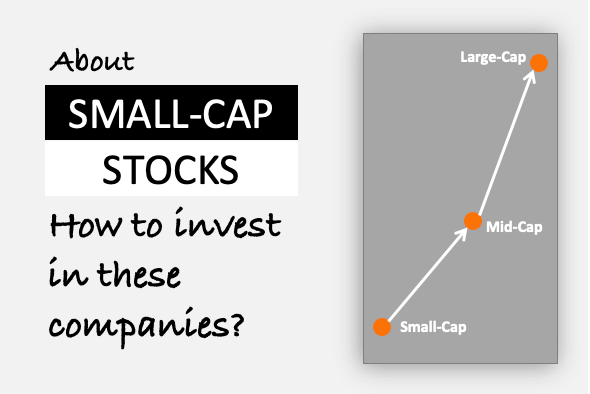Talking about stocks, investing only in a financially healthy company is advisable. But it is easier said than done. Why? Because analyzing the financial health of a company is not easy for a novice? It is a thing that must be learned. In this article, we will try to do just that.
Generally speaking, investors must focus on buying stocks of a quality business. What builds quality? The quality of a company stands on these three legs: (1) quality of management, (2) financial health, and (3) future growth prospects.
This article will focus on the financial health aspect of the company.

Financial Health of A Company
A company with healthy financials will have the necessary money/cash as and when required. The cash may be required in the next 12 months (short term) or after 12 months (long term). In both the case, a health company will have enough liquidity to ensure the cash-outflow whenever the need arises.
I may be sounding as if the finance of a company is all about managing the cash-outflows. In a way it is correct. But to ensure that the company is ready for the necessary cash outflow, it must display few deeper financial attributes.
We will talk about the financial attributes that ensure that the company is always cash-ready to make the required payments.
Allow me to explain what I mean by required payments. It includes ‘all’ payments like bills, employee payrolls/perks, other overheads, supplier payments, debt repayments, dividend, income tax, R&D, Capex, etc.

For a standard company, the cumulative value of all these costs will be about 80% to 90% of its total revenue. Hence, managing it becomes the ultimate responsibility of the team. If the team works well, they will not falter on the cash-outflows. Suggested: How to read cash flow statement.
How the team can work well? They must always monitor and control the key indicators. What are those indicators?…
4 Key Indicators of Financial Health

A company that remains sufficiently liquid, solvent, efficient, and profitable can be said to be financially healthy.
It is important to note that a combination of all four metrics ‘together’ builds the financial health of a company. Individually, these metrics are a less powerful measure of the company’s health.
These four indicators are used by both the company’s managers and expert investors to evaluate the health of their companies.
Allow me to elaborate more on the four indicators:
#1. Liquidity
Liquidity builds the first layer of the foundation of a healthy company. If a company can continue to manage its current liabilities, on time, it can remain afloat. Though liquidity is not the ultimate measure of a company’s financial health, it is the most important filter to screen one. A company that remains illiquid at a stretch, will ultimately have to file for bankruptcy.
Following financial ratios highlights if a company is sufficiently liquid or not:
#2. Solvency
Solvency highlights two things about a company. First, it tells if the company is utilizing too much long-term debt to meet its capital needs. Second, it highlights the financial position of the company considering a worst-case scenario (bankruptcy).
A sufficiently solvent company will be able to pay back its lenders and even render some return to its shareholders in spite of going bankrupt. Read more about it.
Following financial ratios highlights if a company is sufficiently solvent or not:
- Asset Coverage Ratio.
- Current Debt To Inventory Ratio.
- Current Debt To Networth Ratio.
- Debt To Equity Ratio.
#3. Operating Efficiency
Liquidity and solvency parameters are like the bare minimum requirements of a financially healthy company. But to gain more heft, the company must also utilize its assets/capital efficiently. To understand the concept, let’s use an example.
Suppose there are two companies A and B. Both the companies have an asset size of say Rs.100 crore. Company A produces Rs.40 crore in sales and B produces Rs.60 crore. In terms of operating efficiency, company A’s assets are 40% efficient and that of B is 60% efficient. Hence, comparatively, B is a better company than A.
As an investor, we must look for the companies with the highest operating efficiency in each sector/industry. The following financial ratios highlight the operating efficiency of companies:
#3. Profitability
Why a company does business? They do it to earn money and make a profit out of it. But for the investors, there is something more important about a company than the profit numbers. What is it? It is profitability.
Let me give you an example to highlight the concept of profitability.
Suppose there are two companies A and B. Company A produces Rs.100 crore as net profit and company B produces Rs.1.2 crore. From the absolute numbers, company A looks more impressive. But the situation will change when we will see the profitability numbers.
Suppose, the total income of company A is Rs.1,250 crore and that of B’s is Rs.3 crore. Let’s calculate the net margin of both companies. The net margin of A is 8% (=100/1250) and that of B is 40% (=1.2/3).
From the profitability numbers, company B looks far superior to A. The following financial ratios highlight the profitability of a company:
- Gross Margin.
- Net Profit Margin.
- ROA (Return on Asset).
- ROE (Return on Equity).
- RoCE (Return on Capital Employed).
Final Words
The above-mentioned four indicators are like a litmus test for companies. Altogether, they highlight the details of financial health that otherwise remain hidden.
But it is also important to note that in order to judge the financial health, one cannot compare companies of different sectors. Technically, sector comparison can be done, but the interpretation will be erroneous. For example, it is not fair to compare the profitability of an airline company with an IT firm.
Similarly, a construction company inherently needs more debt to manage its working capital. But an FMCG company can live with even zero debt. Hence if we will compare the liquidity/solvency of companies of these two sectors, FMCG will mostly look superior. But the conclusion is not correct. We cannot compare ratios of two absolutely non-similar sectors.
Quick Tip
I personally use the historic numbers of liquidity, solvency, operating efficiency, and profitability ratios for interpretation. Historical interpretation gives me a better feel of where the company is heading.
Suppose the liquidity ratio (current ratio) of a company, 5 years back was 1.2. But today the company has reported a current ratio of 2.5. This is a clear sign of improvement. If the trend continues, the company stands to improve its liquidity position further.
The same kind of interpretation can also be made from the historical numbers of solvency, efficiency, and profitability ratios.
Have a happy investing.







It was interesting to read an gave a clarity on phases on Invest
Hi, I really like your blog and the clarity of terms. I would like you to read our blog as well.
Stocks in excel
PL add KILPEST